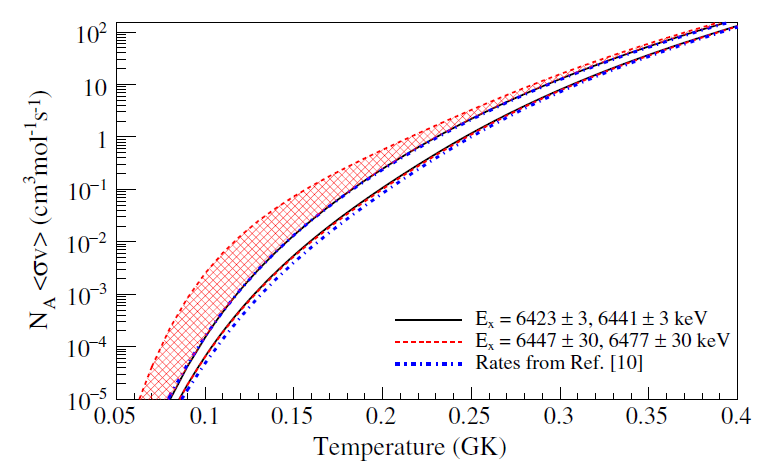
M. Hall et al., Phys. Rev. Lett 122, 052701 (2019)
Detection of nuclear-decay γ rays provides a sensitive thermometer of nova nucleosynthesis. The most intense γ-ray flux is thought to be annihilation radiation from the β+ decay of 18F, which is destroyed prior to decay by the 18F(p,α)15O reaction.Estimates of 18F production had been uncertain, however, because key near-threshold levels in the compound nucleus, 19Ne, had yet to be identified. We report the first measurement of the 19F(3He,tγ)19Ne reaction, in which the placement of two long-sought 3/2+ levels is suggested via triton-γ−γ coincidences. The precise determination of their resonance energies reduces the upper limit of the rate by a factor of 1.5–17 at nova temperatures and reduces the average uncertainty on the nova detection probability by a factor of 2.1.


